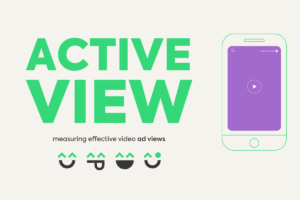If Ad Performance Optimization is your goal as a website owner aiming to enhance ad effectiveness, two crucial factors require attention: the format and placement of each advertising banner. These elements significantly impact ad visibility. Given advertisers’ pursuit of high visibility, it’s essential to delve into strategies that optimize ads, thereby boosting revenue potential through Ad Performance Optimization.
Index
- 1 Optimizing Ad Placement for Ad Performance Optimization
- 2 Leveraging Banner Sizes: An Ad Performance Optimization Strategy
- 3 Ad Viewability: A Cornerstone of Ad Performance Optimization
- 4 Optimizing for User Experience: Lazy Loading
- 5 Strategizing with “Stick” Ads: Elevating Ad Performance Optimization
- 6 Enhancing Impact with Updated “Stick” Strategies
- 7 The Significance of Exposure Time
- 8 Striking a Balance with “Above the Fold” Content
- 9 Finding the Optimal Number of Ads
- 10 Prioritizing User Experience
- 11 Optimizing Ads: The Path to Advertising Success
Optimizing Ad Placement for Ad Performance Optimization
The placement of your banners is not a trivial matter; it significantly affects their effectiveness. Here are some key tips for strategically positioning your ads:
- Proximity to Content: Placing your ads in close proximity to the main content ensures that users notice them while consuming information.
- Above the Fold: Ads positioned at the top of the page, before users need to scroll, have a higher likelihood of catching the users’ attention.
- Left Side Placement: Research indicates that users tend to focus their attention on the left side of the page first. Hence, this area can be strategically advantageous for ad placement.
Leveraging Banner Sizes: An Ad Performance Optimization Strategy
The dimensions of your banners are not to be underestimated; they significantly impact visibility and overall performance. Some common sizes include ‘300 × 250’, ‘728 × 90’, ‘160 × 600’, and ‘320 x 50’ (for mobile devices). While various dimensions are available, the majority of impressions are concentrated in these four options. Selecting the appropriate size can substantially impact click-through rates (CTR) and the overall effectiveness of your ads.
Ad Viewability: A Cornerstone of Ad Performance Optimization
Viewability, a critical metric, refers to whether an ad has been exposed to the user. This metric holds great importance for advertisers as it determines whether their message effectively reaches their intended audience. Achieving high viewability not only enhances the value of your ad inventory but also streamlines campaign delivery. Both the placement and management of ads play a pivotal role in achieving this goal.
Optimizing for User Experience: Lazy Loading
At Grumft, we’ve adopted the practice of lazy loading in our ad blocks, reducing excessive loading during the initial page load. This practice not only enhances user experience but also improves loading speed. Additionally, we employ various strategies, such as incorporating “stick” ads, to maintain high visibility for Ad Performance Optimization.
Strategizing with “Stick” Ads: Elevating Ad Performance Optimization
“Stick” ads, which remain visible even as users scroll down the page, are a powerful tool for increasing visibility. It’s crucial, however, to strategically position these ads, preferably at the top or bottom of the viewing window. On mobile devices, the 728 x 90 format is recommended for the bottom.
Enhancing Impact with Updated “Stick” Strategies
Fixed ad blocks typically display only two ads. However, combining these with the updating technique can lead to multiple impressions in the same positions. Care must be taken to avoid updating ads when users switch tabs, as this could be considered fraudulent. Grumft has devised a system that optimizes this technique while maintaining high levels of visibility and engagement.
The Significance of Exposure Time
Measuring the time since the last update is essential in determining the timing for ad updates. Equally crucial is considering exposure time, which refers to how long an ad has been in the viewing window. Updating ads based on exposure time can significantly enhance visibility and overall performance.
Striking a Balance with “Above the Fold” Content
“Above the fold” content refers to the portion visible without scrolling when a page loads. This prime space holds great potential for displaying ads. However, it’s imperative to strike a balance. Ads should load quickly enough to capture users’ attention, without compromising their browsing experience. Careful selection of ad placements within this section can make all the difference.
Finding the Optimal Number of Ads
Determining the right number of ads requires trial and error. There’s no universal magic number; it varies based on your site’s design and user behavior. Consistently monitor metrics and make adjustments to strike the perfect balance, maximizing visibility without hampering user experience.
Prioritizing User Experience
In your quest to enhance visibility, never sacrifice user experience. Seamless navigation and swift loading times are crucial for keeping users engaged. Implementing lazy loading practices can help maintain this delicate equilibrium.
Optimizing Ads: The Path to Advertising Success
Optimizing ads on your website goes beyond mere placement and format—it’s an integrated strategy to enhance visibility and, ultimately, boost revenue. By following techniques such as strategic placement, leveraging “stick” ads, and employing timely updates, you can amplify the visibility and performance of your ads. At Grumft, we’re your partners in the journey towards advertising success. Our team of experts tirelessly works to maintain the peak visibility of your inventory. Get in touch with us and explore how we can elevate your results through Ad Performance Optimization!





